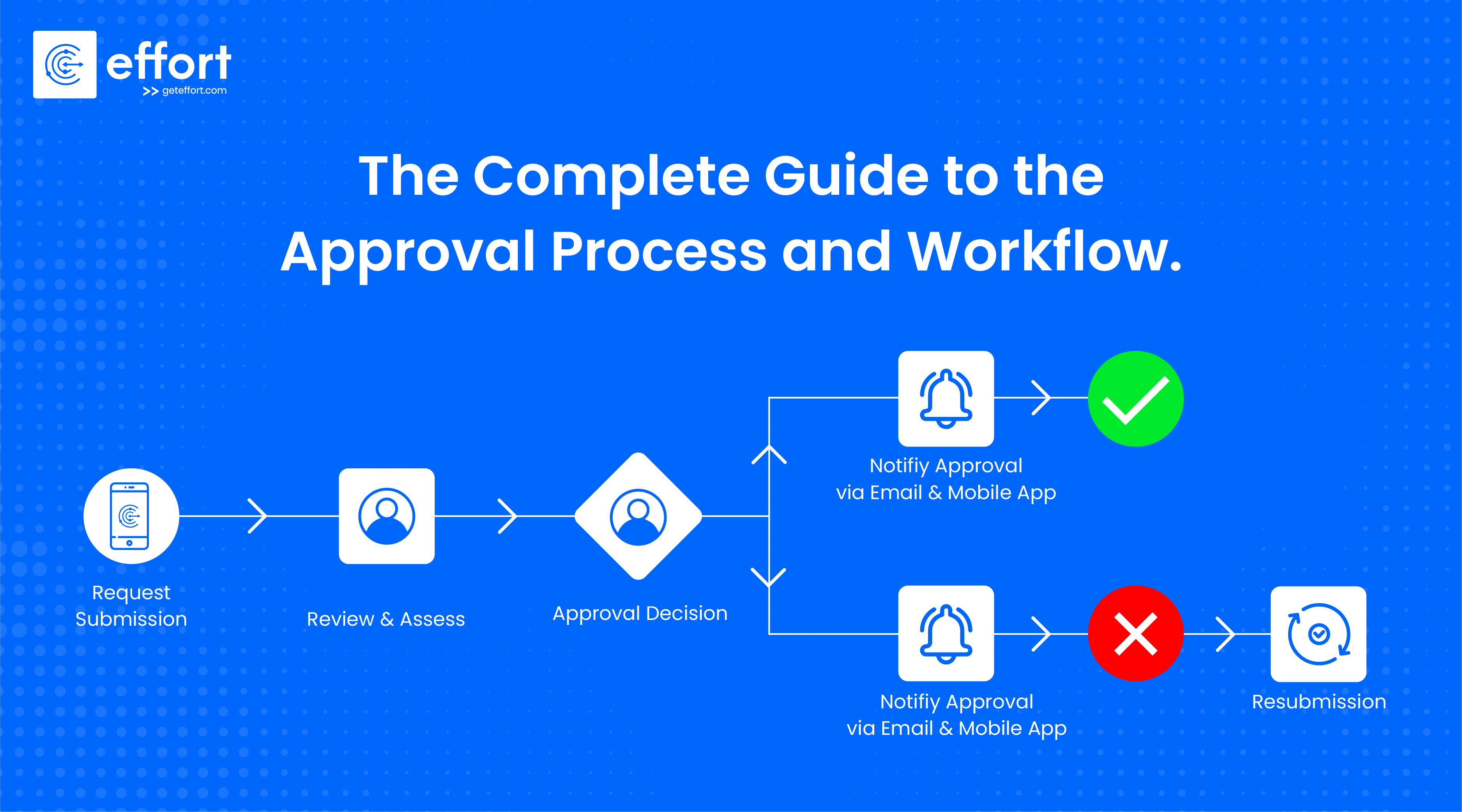In today’s fast-paced business environment, companies are constantly seeking ways to improve efficiency, reduce costs, and maintain accuracy across their processes. One of the most effective strategies for achieving these goals is by streamlining workflows through automation. Specifically, using approval forms and workflows helps businesses ensure consistency and compliance while saving time and resources. With the rise of no-code BPM (Business Process Management) platforms, even complex processes such as the travel request approval workflow can now be automated without the need for extensive coding or IT support.
In this blog, we’ll explore how approval forms and workflows can help streamline your business operations, the importance of automating approval processes, and how no-code BPM can be a game-changer for your business.
What Are Approval Forms and Workflows?
Approval forms and workflows are automated sequences that route tasks or requests through a defined process, ensuring they receive the necessary approvals before moving forward. For example, in a travel request approval workflow, an employee would submit a travel request form, which would then be automatically routed through the proper channels (supervisor, finance department, etc.) for approval.
These workflows remove the need for manual intervention, emails, and spreadsheets to handle requests, ensuring a smoother, more efficient process. They also help track requests and approvals in real time, improving transparency and accountability within the organization.
The Importance of Streamlined Approval Processes
Efficient approval workflows are essential for businesses of all sizes. Whether it’s managing travel requests, budget approvals, or vendor contracts, automated workflows ensure that these processes are handled quickly and consistently. Some key benefits of streamlining approval workflows include:
- Reduced Errors and Delays: Manual approval processes often lead to errors, delays, and missed steps. Automating these workflows ensures that the right people receive requests at the right time, reducing the likelihood of bottlenecks and mistakes.
- Increased Productivity: By eliminating repetitive manual tasks, employees can focus on higher-value work. Instead of spending hours tracking down approvals or sending follow-up emails, they can rely on automated workflows to move tasks through the system.
- Improved Compliance and Accountability: Automated approval workflows help ensure that all necessary steps are followed, reducing the risk of non-compliance with internal policies or regulations. Furthermore, these systems maintain a detailed record of who approved what, providing an audit trail if needed.
- Better Visibility and Tracking: With manual workflows, it can be challenging to track where requests are in the process. Automated workflows offer real-time visibility, allowing managers and employees to check the status of requests, identify bottlenecks, and ensure timely approvals.
How No-Code BPM Transforms Approval Workflows
Traditionally, businesses needed extensive IT support or custom development to implement workflow automation. However, no-code BPM platforms have revolutionized the way businesses automate processes. These tools allow non-technical users to create and manage workflows using intuitive drag-and-drop interfaces, eliminating the need for complex coding.
Here’s how no-code BPM can streamline your approval processes:
- User-Friendly Design: No-code BPM platforms make it easy to design and implement approval workflows. With a simple drag-and-drop interface, anyone in the organization can create custom workflows without needing specialized technical knowledge.
- Rapid Deployment: With traditional development, it can take weeks or even months to implement an automated workflow. No-code platforms, on the other hand, allow businesses to create and deploy approval workflows in a matter of days.
- Customization: No-code BPM platforms allow users to customize workflows to meet their specific business needs. Whether it’s adding approval layers, setting rules, or integrating with existing systems, businesses can tailor workflows to their exact requirements.
- Integration with Existing Systems: Modern no-code BPM platforms integrate seamlessly with existing business systems such as CRM, ERP, and accounting software. This ensures that workflows are connected with the right data, reducing the need for manual data entry and ensuring accuracy.
- Scalability: No-code BPM platforms grow with your business. As your business evolves, you can easily update workflows or create new ones without significant time or cost investment.
Travel Request Approval Workflow: A Key Use Case
One of the most common approval workflows used in businesses today is the travel request approval workflow. Managing employee travel can be a complex and time-consuming task, especially when multiple layers of approval are required. Automating this process with a no-code BPM platform simplifies the workflow, ensuring that travel requests are handled quickly and accurately.
Here’s how a travel request approval workflow typically works:
- Employee Submits a Travel Request Form: The process begins when an employee submits a travel request form. This form includes essential details such as travel dates, destination, purpose of the trip, estimated costs, and any required travel documentation (e.g., visas).
- Automatic Routing for Approval: Once the form is submitted, the workflow automatically routes the request to the employee’s supervisor for review. The supervisor can either approve, reject, or request additional information.
- Finance Department Review: After the supervisor approves the request, the workflow sends it to the finance department. The finance team reviews the budget and ensures that the trip aligns with the company’s travel policies.
- Final Approval and Notification: Once the finance department approves the request, the workflow sends a final approval notification to the employee. The system also generates any necessary documents (e.g., travel itineraries or expense reports) and records the approval in the system for future reference.
- Real-Time Tracking: Throughout the process, both the employee and the approvers can track the status of the request in real-time, reducing the need for follow-up emails or phone calls.
How Automating Travel Requests Benefits Your Business
Automating the travel request approval workflow offers several benefits for businesses:
- Faster Approvals: Automation significantly reduces the time it takes to get travel requests approved. With automatic routing and notifications, requests are handled quickly, minimizing delays and ensuring employees can book travel as soon as possible.
- Improved Accuracy: Automated workflows reduce the risk of errors, such as missing information or incorrect budget allocations. With built-in checks and balances, every step of the process is carefully monitored.
- Cost Control: Automating travel requests helps businesses maintain better control over travel expenses. By routing requests through the finance department for approval, companies can ensure that trips stay within budget and align with company policies.
- Better Record Keeping: Automated workflows create a digital trail of approvals, making it easy to track and audit travel requests. This ensures compliance with company policies and provides documentation in case of any disputes.
Conclusion: The Power of No-Code BPM for Business Efficiency
Implementing automated approval forms and workflows is a powerful way to streamline your business operations. Whether you’re managing travel requests, vendor contracts, or any other approval-based process, automation ensures efficiency, accuracy, and accountability. With the rise of no-code BPM platforms, businesses of all sizes can now create custom workflows without the need for expensive development or IT support.
By automating processes like the travel request approval workflow, you can reduce delays, improve transparency, and ensure that your business operates smoothly. In the ever-competitive business landscape, these efficiencies give your organization the edge it needs to succeed.




